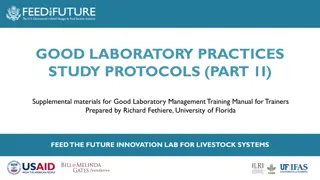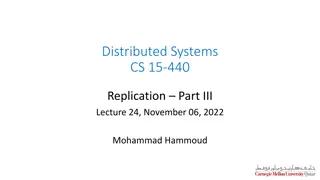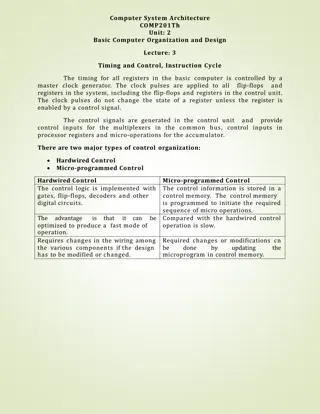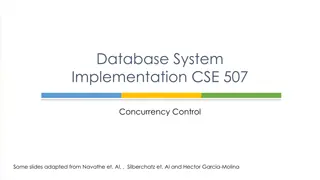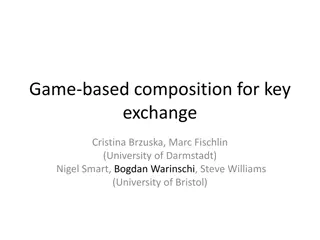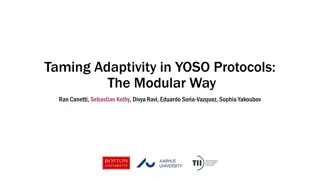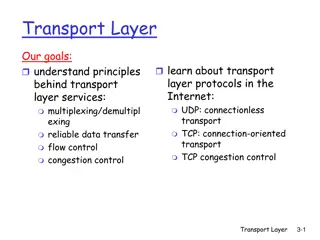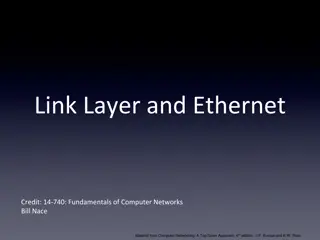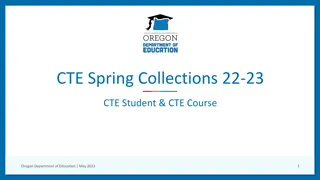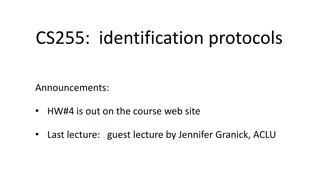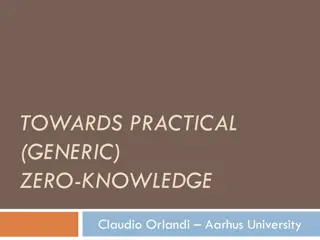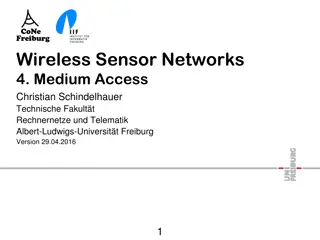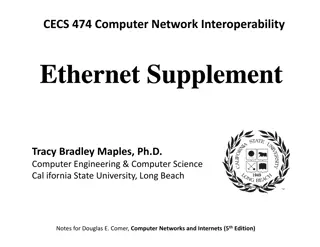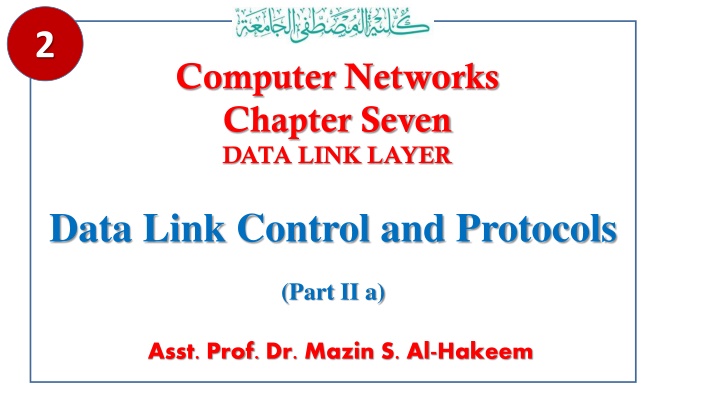
Data Link Control and Protocols: Understanding Flow and Error Control in Computer Networks
Explore the nuances of data link control and protocols in computer networks, focusing on flow and error control mechanisms for noiseless and noisy channels. Learn about the Simplest Protocol, Stop-and-Wait Protocol, and more as you dive into the intricacies of ensuring reliable data transmission.
Uploaded on | 0 Views
Download Presentation

Please find below an Image/Link to download the presentation.
The content on the website is provided AS IS for your information and personal use only. It may not be sold, licensed, or shared on other websites without obtaining consent from the author. If you encounter any issues during the download, it is possible that the publisher has removed the file from their server.
You are allowed to download the files provided on this website for personal or commercial use, subject to the condition that they are used lawfully. All files are the property of their respective owners.
The content on the website is provided AS IS for your information and personal use only. It may not be sold, licensed, or shared on other websites without obtaining consent from the author.
E N D
Presentation Transcript
2 Computer Networks Chapter Seven DATA LINK LAYER Data Link Control and Protocols (Part II a) Asst. Prof. Dr. Mazin S. Al-Hakeem
Data Link Control and Protocols (I) Flow and Error Control Flow Control Error Control
7.6- Protocols Noiseless (error-free) Channels Noisy (error-creating) Channels Noiseless channels are the ideal channel in which no frames are lost, duplicated, or corrupted. Although the Stop-and-Wait Protocol gives us an idea of how to add flow control to its predecessor, noiseless channels are nonexistent (i.e. the error control are ignored). We will introduce two protocols for this type of channel. The first is a protocol that does not use flow control (Simplest Protocol); the second is the one that does (Stop-and- Wait Protocol). We discuss three protocols in this section that use error control. Stop-and-Wait ARQ Go-Back-N ARQ Selective Repeat ARQ Of course, neither has error control because we have assumed that the channel is a perfect noiseless channel.
7.6- Protocols 7.6.1- Noiseless (error-free) Channels A. Simplest Protocol Communication using (Flow Diagram) Simplest Protocol It is a unidirectional protocol in which data frames are traveling in only one direction from the sender to receiver. We assume that the receiver can immediately handle any frame it receives with a processing time that is small enough to be negligible. 0 0
7.6- Protocols 7.6.1- Noiseless (error-free) Channels A. Simplest Protocol Communication using (Flow Diagram) using Simplest Protocol The data link layer of the receiver immediately removes the header from the frame and hands the data packet to its network layer, which can also accept the packet immediately. In other words, the receiver can never be overwhelmed with incoming frames. It is very simple. The sender sends a sequence of frames without even thinking about the receiver. To send four frames, four events occur at the sender site and foue events at the receiver sit 0 0
7.6- Protocols 7.6.1- Noiseless (error-free) Channels B. Stop-and-Wait Protocol If data frames arrive at the receiver site faster than they can be processed, the frames must be stored until their use. Normally, the receiver does not have enough storage space, especially if it is receiving data from many sources. This may result in either the discarding of frames or denial of service (DoS). To prevent the receiver from becoming overwhelmed with frames, we somehow need to tell the sender to slow down. There must be feedback from the receiver to the sender (ACK)
Communication (Flow Diagram) using Stop-and-Wait Protocol 7.6- Protocols 7.6.1- Noiseless (error-free) Channels B. Stop-and-Wait Protocol This protocol is called the Stop-and- Wait Protocol because the sender sends one frame, stops until it receives confirmation from the receiver (okay to go ahead), and then sends the next frame. We add flow control (ACK) to our previous protocol
Communication (Flow Diagram) using Stop-and-Wait Protocol 7.6- Protocols 7.6.1- Noiseless (error-free) Channels B. Stop-and-Wait Protocol At any time, there is either one data frame on the forward channel or one ACK frame on the reverse channel. We therefore need a half-duplex link.
Protocols Noiseless Channels Protocols A. Simplest Protocol
Protocols Noiseless Channels Protocols A. Simplest Protocol B. Stop-and-Wait Protocol
Computer Networks Chapter Seven DATA LINK LAYER Data Link Control and Protocols (Part II a) Asst. Prof. Dr. Mazin S. Al-Hakeem


